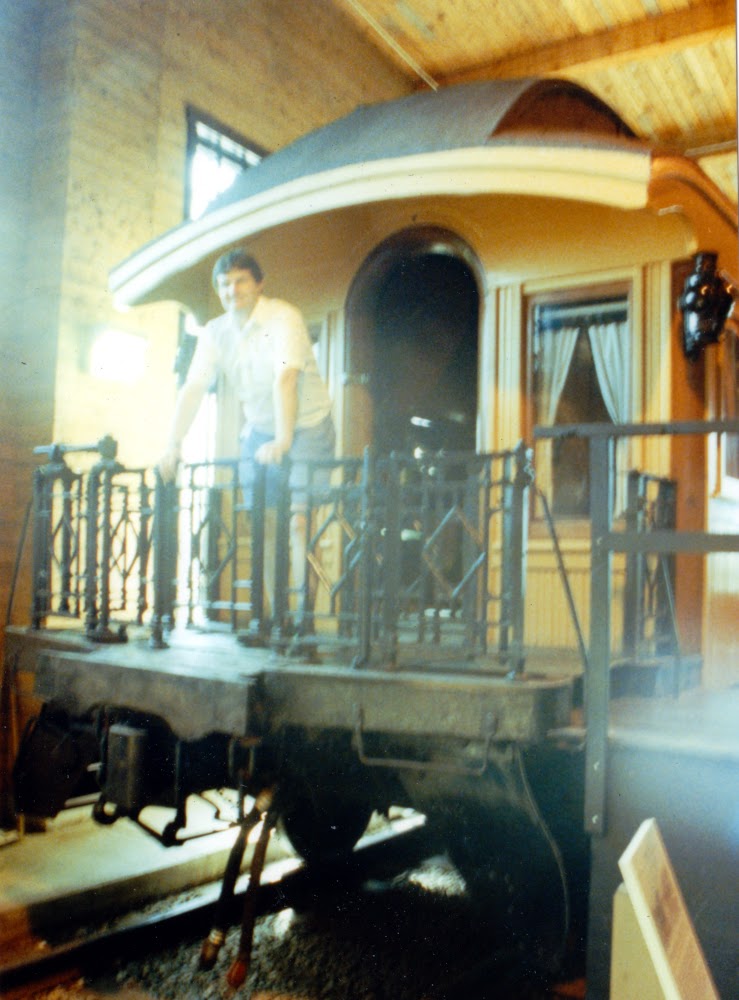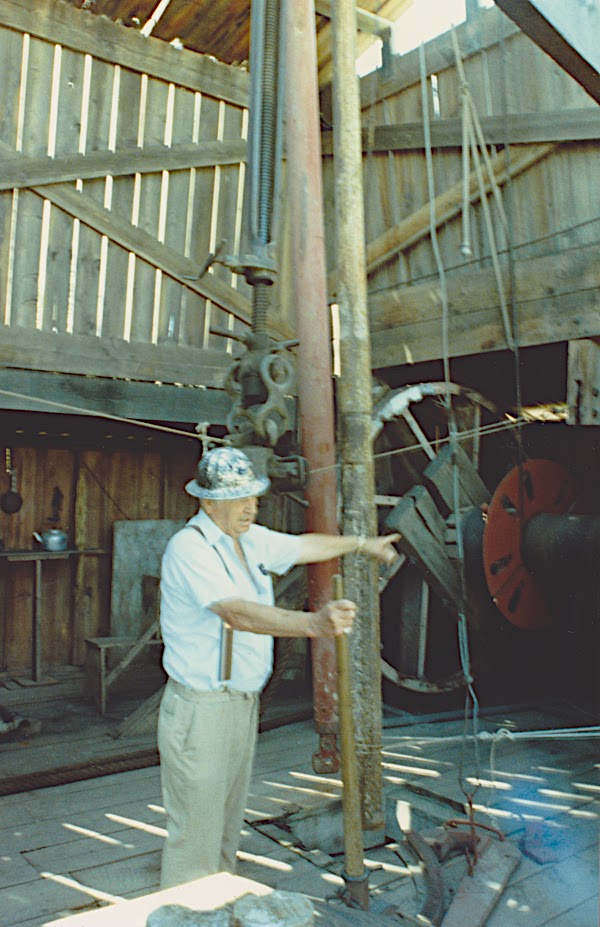... but it's a dry heat!
It was early August and we were driving to Calgary in three days in a 1989 Volkswagen Fox with no air conditioning. After leaving Brandon that morning, we had our planned 'shower stop' at Swift Current where it was 30 degrees C with a strong wind. And then it got hot.

Near Walsh, Alberta at 16hr it was 35 degrees Celsius. I took this photo as a salute to everyone who had ever been in Palliser's Triangle in this kind of weather.
And to celebrate the fact that we were having this authentic 'Canadian experience'.
* * *
Calgary, Heritage Park
A striking sight at Heritage Park was CPR 5931, built by MLW in 1949.
Were it not for the streetlights growing from the tender, this would be a sure winner in any railway photo contest!
Here are a few things they hid under the semi-streamlining ...
I will not store my priceless artifact out in the weather ...
I will not store my priceless artifact out in the weather ...
I will not store my priceless artifact out in the weather ...
* * *
A 1989-built replica of a Calgary streetcar.
Weather report: The weather was quite pleasant in Calgary.
* * *
CPR 76 was originally a Langdon and Shepard official car.
It was at Craigellachie in both 1885 and 1985.
Someone's always got to pretend he's Van Horne, eh?
* * *
While Upper Canada Village reflects life in Canada circa 1867, Heritage Park shows life in the west as fossil fuels and western agricultural settlement were in their ascendency. For those of us interested in the recent history of industrialization, Heritage Park is probably more interesting. And, as you are already observing, there are more things which run on rails here.
The 2024 is an 0-6-0 which was originally built for the US Army in 1944 by Lima.
Kids can state that they've seen and ridden behind a real steam engine after visiting.
* * *

A 'country elevator' is another interesting piece of history which the park offers. The two artifact interpreters we encountered were both 75 years old and spoke with authority on their subjects. At the grain elevator, our host said he was from Woodrow, Saskatchewan (During a previous vacation, we had been to nearby Assiniboia).
He also said that Swift Current water has a laxative effect because of all the minerals in it.
We had consumed a whole jug of it after our Swift Current stop on the previous day.
We described our genuine Canadian experience in the heat of Palliser's Triangle and he uttered a supportive 'Bless your hearts.'
* * *
Speaking as an older person in 2024 I will say ... 'When I was a young man, we didn't have YouTube. We couldn't just "log on" through a "telephone modem" and see a 'hit and miss engine' working any time we wanted! So we had to take "still pictures" on "film" and have them "developed" if we wanted to remember what one of these engines was like!'
Our real interpreter said these engines (which often powered remote country elevators) were initially run with kerosene and water - until kerosene became too expensive, and then gasoline was substituted as a fuel.
* * *
 |
| from: Canadian Farm Year Book; 1913; The Farm Press Ltd. |
Here are a few advertisements from that era for similar engines.
I've been promoting this film this week ...
* * *
After posting, Jim Christie found the instruction manual
for the operation of this particular type of engine
and where and how to install one ...
* * *
Of course there are many photos featuring the train!
And then we went to the oil derrick.
Once again, a 75-year-old interpreter does a great job telling us about the artifacts. In this case, this was the type of 'steam-driven pile driver' drill that he worked on when he started in the oil business in the 1930s. It would take 2 years to drill 6000 feet.
I did a quick check ... in some cases, this depth can be drilled in 7-10 days today. But, of course, it depends on many variables.
As part of his interpretation of 'the human experience' of being a roughneck, he held a 15-pound sledge hammer vertically in his outstretched arm. Then he slowly brought the hammer's head down to touch his nose with it.
 |
| Oil, The History of Canada's Oil & Gas Industry; Ed Gould; 1976; Hancock House. |
Imperial Oil's Leduc No 1 in February 1947
just before it 'blew in'.
An oil deposit which becomes a 'gusher'
because of natural gas pressure
'blows in' when the deposit is tapped.
No smoking, please.
* * *
A simulated shallow-draft steamboat gives visitors the experience of another important form of transportation used on the lakes and rivers of western Canada. You can spot a couple of details showing the CPR 'branding' of the boat.
 |
| from: Canadian Pacific, The Story of the Famous Shipping Line; George Musk; 1981; David & Charles, UK. |
CPR's 800-ton Moyie worked on Kootenay Lake from 1898 until 1956.
* * *
And, of course, another photo of the train!









